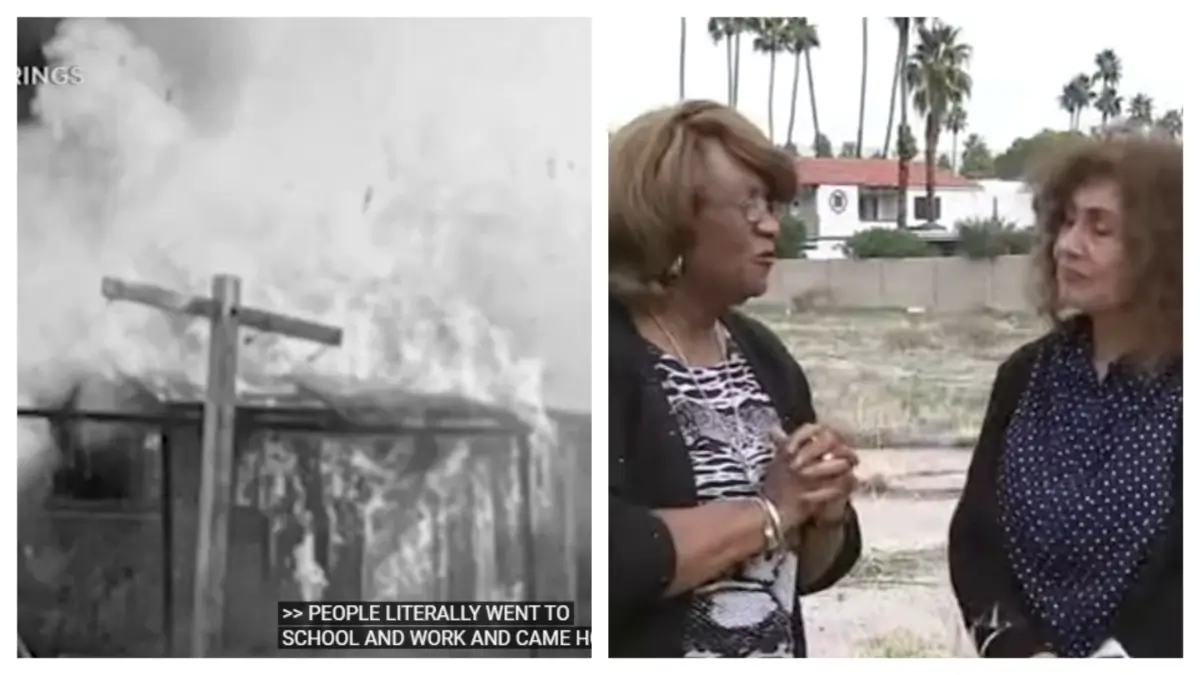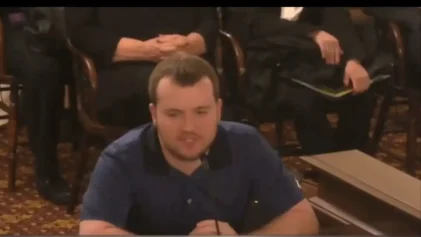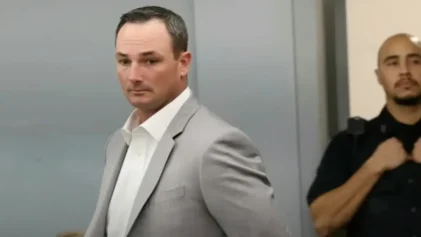The Palm Springs City Council unanimously approved a $5.9 million settlement for Black and Latino families whose ancestral homes were burned down and bulldozed 60 years ago to make room for a commercial redevelopment that has since been criticized as an “exotic playground” for the rich and famous.

A packed crowd in the City Hall chambers on Nov. 14 erupted into applause following the decision, standing up, cheering, and sharing embraces.
The settlement package compensates former Section 14 residents and their families based on the current value of personal property lost.
As part of the agreement, the city will provide direct cash payments for an estimated 1,200 individuals, and establish a lasting tribute, including a potential community park, cultural healing center, and public monument, all intended to honor the legacy of Black and Latino families displaced when the city demolished the neighborhood during urban renewal in the 1950s and 1960s.
The agreement closes a painful chapter in California’s history and follows years of advocacy from the Palm Springs Section 14 Survivors group, led by former resident Pearl Devers. The group put pressure on the city to compensate for the destruction of their homes, loss of personal property, and the racial trauma caused by the total loss of the homestead.
“I feel like I can breathe finally, for my community, for my parents, for everybody. It’s been a long journey,” Devers said after the approval vote on Nov. 14, according to KQED. “It’s been a hard-fought journey. And I’m just happy that we have prevailed.”
During the 1940s, Section 14 became a thriving community next to downtown Palm Springs, and was one of the few neighborhoods where Black and Latino residents could live due to home ownership contracts that banned people of color.
These discriminatory covenants restricted non-white residents from purchasing homes in most parts of the city, forcing many Black and Latino families into the enclave more than 80 years ago.
At the time, federal laws restricted Native American tribes from leasing their land for more than five years, which made it less attractive to commercial developers. The 1-square mile Section 14 enclave was situated on land owned by the Agua Caliente Band, which leased plots to Latino and Black residents who built on property the developers were avoiding.
Amid the city’s affordable housing shortage, Section 14 offered a centrally located, budget-friendly option for working-class residents. It became home to chefs, chauffeurs, and maids who fueled Palm Springs’ growing hospitality industry, evolving into a vibrant community with homes, mobile homes, restaurants, and churches.
But everything changed in 1959, when the federal government allowed certain tribes, including the Agua Caliente Band, to lease their land for up to 99 years, opening the door for commercial developers, and soon after, the city gained control of the land through a conservatorship. The fire department was then ordered to demolish and burn the homes in Section 14 to make way for luxury tourism.
By all accounts, the residents in Section 14 were afforded no dignity in losing everything they had.
The conservators gave home owners 30-day eviction notices. However, some in the community said they did not receive the notices at all. Others said their homes were destroyed before the deadline, and their belongings burned and stolen.
The conservators posted the eviction notices without the full knowledge of the Indians, according to a 1968 report by the attorney general’s office, and “were induced to execute various documents by statements of the conservators that they could lease the land at higher rentals.”
Some of the houses were made of cinderblock, and others were wood-frame homes and shacks.
Then-mayor Frank Bogert backed the eviction-by-fire process. He told The Los Angeles Times in 2001 that he “was scared to death that someone from Life magazine was going to come out and see the poverty, the cardboard houses, and do a story about the poor people and horrible conditions in Palm Springs just half a mile from the Desert Inn, our high-class property.”
A 1968 report from the California attorney general’s office described the actions taken by the city as a “city-engineered holocaust.”
Initially, economists estimated the families were owed $400 million to $2 billion in reparations.
The City Council added a resolution to the settlement, which establishes a day of remembrance to honor the survivors and descendants of the long-forgotten district known as Section 14, responding to a call made by several commenters during last week’s public meeting on the issue.
“You cannot fix things that happened in the past. But what you do going forward is, as or more important,” Mayor Jeffrey Bernstein said at the meeting, where the former residents and descendants of Section 14 agreed to accept the offer.
“This agreement demonstrates that it’s never too late to acknowledge past wrongs and take meaningful steps toward justice,” said Areva Martin, lead counsel for the group.
In 2022, Martin condemned the city for its ongoing role in perpetuating an historic injustice.
“Many of you know Palm Springs to be an exotic resort location in the desert, a place that is the playground for the rich and famous, the ultra-wealthy, and the Hollywood elite,” she said after filing an updated legal claim on behalf of six families. “But as Palm Springs was developing into this exotic playground, this place that many call their vacation home, it was keeping a very, very dark secret.”
Today, the 1-square mile of land (roughly 646 acres) remains owned by the Agua Caliente Band of Cahuilla Indians.
During last week’s meeting, the City Council approved $21 million for housing and economic programs to address past discrimination against Black and Latino residents. This includes $10 million for a first-time homebuyer assistance program and $10 million for a community land trust, with both programs prioritizing outreach to families from the Section 14 neighborhood.
The city also plans to allocate $1 million to support a small business program aimed at empowering marginalized communities by fostering local business initiatives.
In 2021, the Palm Springs Section 14 Survivors group filed a claim against the city, alleging that the evictions were racially motivated. The city later issued a formal apology for its role in displacing working-class Black and Latino residents, many of whom worked in service jobs like construction and housekeeping.
The city issued an apology in 2021 and pledged to make amends to the families. However, negotiations stalled, with no significant progress until this year.
Back in April, the city proposed $4.2 million in restitution to survivors and descendants of the Section 14 neighborhood, covering 145 destroyed homes and belongings. However, the offer was rejected, with the group’s attorney, Martin, arguing that the amount was a small fraction of what the families were owed for their losses and the racial trauma they endured.
The settlement is based on a city-released study from November, which found that approximately 197 homes were demolished. This new estimate played a key role in shaping the final agreement, which addresses the broader scope of the destruction and the ongoing harm to the displaced families.
The reparations settlement in Palm Springs follows similar action in 2021, when Los Angeles County returned Bruce Beach to the Bruce family, taken a century earlier due to racial discrimination.
The Bruce Beach settlement marked a significant legal and historic victory for the descendants of Charles and Willa Bruce, whose property was seized a century ago by the city of Manhattan Beach. The property, purchased in 1912, became a popular resort for Black families at a time when other beaches were segregated. However, in 1924, the local government used eminent domain to claim the land, stripping the Bruces of their business, home, and wealth.
Residents in Russell City and Los Angeles have also launched reparation initiatives, advocating for compensation for properties taken through eminent domain.
Earlier this year, the California Legislative Black Caucus introduced reparation bills addressing the state’s legacy of racism, including an apology for slavery and protections against discrimination based on hair texture. However, the bills did not include direct cash reparations, focusing instead on systemic changes in housing, education, and employment.
In June, California allocated $12 million for the package of bills. The California Legislative Black Caucus also introduced SB 1050 to address racial discrimination, including a proposal to review claims for property lost through racially motivated eminent domain. However, Governor Gavin Newsom vetoed the bill in September, citing logistical issues with its implementation.
What happened in Palm Springs reflected a pattern throughout the mid-20th century, when eminent domain was widely used in major U.S. cities to displace Black communities in favor of urban renewal projects, often to make room for commercial development, highways, and infrastructure.
These efforts disproportionately impacted low-income Black and Latino neighborhoods, resulting in widespread loss of homes and businesses. In cities like New York, Detroit, and St. Louis, urban renewal initiatives bulldozed thriving communities, tearing apart tightly knit cultural hubs and leaving residents without compensation.


